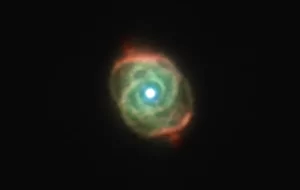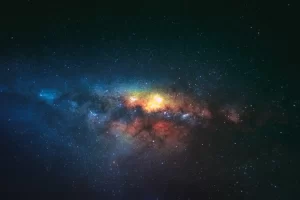
Planets have long fascinated humanity, inspiring countless myths, scientific inquiries, and space exploration missions. These celestial bodies, which orbit stars (such as our Sun), play a crucial role in the makeup of our solar system and the wider universe. From the rocky planets of our own solar system to the many exoplanets discovered orbiting distant stars, planets are the foundation of our understanding of the cosmos. In this article, we will explore the different types of planets, their characteristics, and the importance of studying planets in space.
What is a Planet?
At its core, a planet is a celestial body that orbits a star and has sufficient mass for its gravity to cause it to form a nearly round shape. Planets also have cleared their orbits of most debris, meaning they are the dominant objects in their orbital zone. The modern definition, as agreed upon by the International Astronomical Union (IAU), specifies that a planet must meet three criteria:
- It must orbit a star.
- It must be massive enough for gravity to shape it into a nearly round form.
- It must have “cleared” its orbit of other objects.
The term “planet” comes from the Greek word planētēs, which means “wanderer,” reflecting the way planets appear to move against the fixed background of stars. There are eight recognized planets in our solar system, but astronomers have also discovered thousands of exoplanets orbiting other stars, expanding our understanding of what a planet can be.
The Planets in Our Solar System
Our solar system consists of eight planets, divided into two main categories: the terrestrial planets (rocky planets) and the gas giants. These planets vary in size, composition, and environmental conditions. Let’s take a look at each of them:
1. Mercury
Mercury is the closest planet to the Sun and the smallest planet in our solar system. Due to its proximity to the Sun, Mercury experiences extreme temperatures—reaching up to 800°F (427°C) during the day, while plummeting to -330°F (-201°C) at night. Mercury has a thin atmosphere, mostly made up of oxygen, sodium, and hydrogen, which provides little protection from the harsh conditions of space.
Mercury’s surface is similar to the Moon, with many craters and large, flat plains. Despite being close to the Sun, Mercury is not the hottest planet in the solar system due to its lack of atmosphere to trap heat.
2. Venus
Venus is often called Earth’s “sister planet” due to its similar size and mass. However, Venus is radically different in its environment. It has a thick atmosphere composed mainly of carbon dioxide, with clouds of sulfuric acid, creating a runaway greenhouse effect. This causes Venus to be the hottest planet in the solar system, with surface temperatures averaging around 900°F (475°C)—hot enough to melt lead.
Venus’s surface is obscured by thick clouds, but radar mapping from spacecraft like NASA’s Magellan mission has revealed vast plains, highland regions, and large volcanoes. Venus rotates in the opposite direction of most planets in our solar system, meaning the Sun rises in the west and sets in the east.
3. Earth
Earth is the only known planet in our solar system that supports life. It has the perfect conditions for life, including liquid water, a breathable atmosphere, and a moderate climate. Earth’s atmosphere is primarily composed of nitrogen and oxygen, with trace amounts of carbon dioxide and other gases. This atmosphere, along with Earth’s magnetic field, protects us from harmful solar radiation.
The planet has diverse ecosystems and a dynamic surface, shaped by tectonic activity, erosion, and volcanic processes. Earth is also unique for its large amount of liquid water, which covers about 71% of its surface.
4. Mars
Mars, the “Red Planet,” is the fourth planet from the Sun and is most similar to Earth in terms of its day length and the tilt of its axis. The planet’s red color is due to iron oxide (rust) on its surface. Mars has a thin atmosphere, composed mostly of carbon dioxide, which cannot support human life without assistance.
Mars has some of the most stunning features in the solar system, including Olympus Mons, the largest volcano, and Valles Marineris, a canyon system that dwarfs the Grand Canyon. Scientists are particularly interested in Mars because of evidence suggesting that liquid water may have once existed on the planet’s surface, sparking speculation about the potential for past life.
5. Jupiter
Jupiter is the largest planet in the solar system, a gas giant made mostly of hydrogen and helium. Jupiter’s atmosphere is famous for its Great Red Spot, a massive storm that has been raging for centuries. The planet has a strong magnetic field, dozens of moons (including the four large Galilean moons: Io, Europa, Ganymede, and Callisto), and a system of faint rings.
Jupiter’s immense size and gravity have made it a subject of study for understanding the formation of the solar system. Its moons, particularly Europa, have drawn attention as potential habitats for life, with scientists speculating that subsurface oceans on Europa might harbor microbial life.
6. Saturn
Saturn is another gas giant, known for its spectacular ring system, which is made up of ice particles, dust, and rocky debris. Like Jupiter, Saturn is mostly composed of hydrogen and helium, with a relatively small core of heavier elements. Saturn has a strong magnetic field and dozens of moons, including Titan, the second-largest moon in the solar system. Titan is of particular interest due to its dense atmosphere and lakes of liquid methane, which resemble conditions on early Earth.
Saturn’s rings are perhaps the most beautiful and distinctive feature in the solar system, and they continue to captivate astronomers. Saturn is a key target for future exploration, particularly in terms of its moons and the possibility of finding life.
7. Uranus
Uranus is an ice giant, composed mostly of water, ammonia, and methane ices, along with hydrogen and helium. It has a distinct pale blue color due to methane in its atmosphere, which absorbs red light and reflects blue. Uranus is unique in that it rotates on its side, with an axial tilt of about 98 degrees, meaning its poles experience extreme seasons.
Uranus has a faint ring system and at least 27 moons. Its atmosphere is mostly hydrogen and helium, and the planet is extremely cold, with temperatures dropping to -371°F (-224°C).
8. Neptune
Neptune is the outermost planet in our solar system and is also an ice giant. Its atmosphere is primarily hydrogen, helium, and methane, which gives the planet its striking blue color. Neptune is known for its extreme winds, the fastest in the solar system, with gusts reaching up to 1,500 miles per hour (2,400 kilometers per hour).
Neptune has a system of rings, although they are faint and difficult to observe. Its largest moon, Triton, is unique in that it has a retrograde orbit, meaning it orbits Neptune in the opposite direction of the planet’s rotation. Triton is believed to have once been a captured object from the Kuiper Belt, a region of icy bodies beyond Neptune.
Exoplanets: Planets Beyond Our Solar System
While the eight planets in our solar system are well-known, astronomers have discovered thousands of exoplanets—planets that orbit stars outside our solar system. The discovery of exoplanets has revolutionized our understanding of planets, showing that they come in an astonishing variety of sizes, compositions, and orbital characteristics.
Exoplanets have been found using a variety of methods, including the transit method (measuring the dimming of a star as a planet passes in front of it) and the radial velocity method (measuring the wobble of a star caused by the gravitational pull of an orbiting planet). Some exoplanets are similar in size and composition to Earth and are located in the “habitable zone” of their star, where liquid water could exist. These planets are the subject of intense study, as they could potentially harbor life.
The Importance of Studying Planets
Studying planets, both in our solar system and beyond, helps us understand the origins and evolution of our own planet. By examining the atmospheres, climates, and geology of other planets, scientists can gain insights into Earth’s history and future. For example, studying Mars helps scientists understand the potential for life on other planets and the conditions that could make a planet habitable. Similarly, studying gas giants like Jupiter and Saturn gives scientists insight into the formation of planetary systems.
The study of exoplanets is particularly exciting because it offers the possibility of finding Earth-like planets that could support life. Missions like NASA’s Kepler Space Telescope and James Webb Space Telescope are focused on detecting exoplanets in the habitable zone of stars, bringing us closer to answering one of humanity’s most profound questions: Are we alone in the universe?
Conclusion
Planets are the cornerstones of space exploration, offering a window into the history and future of the universe. From the rocky planets of our solar system to the distant exoplanets orbiting other stars, planets are diverse and fascinating, with each one contributing to our understanding of the cosmos. As technology advances and we continue to explore space, the study of planets will remain central to our quest to unravel the mysteries of the universe and to discover new worlds.




